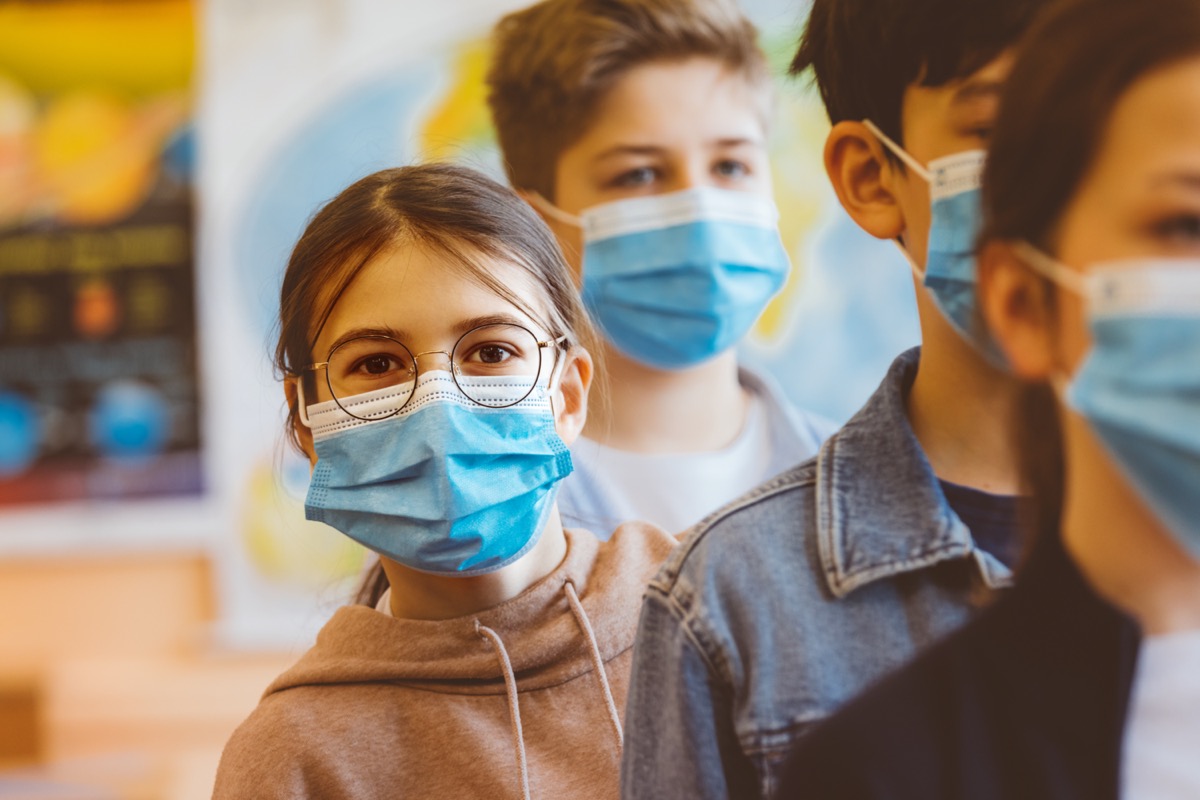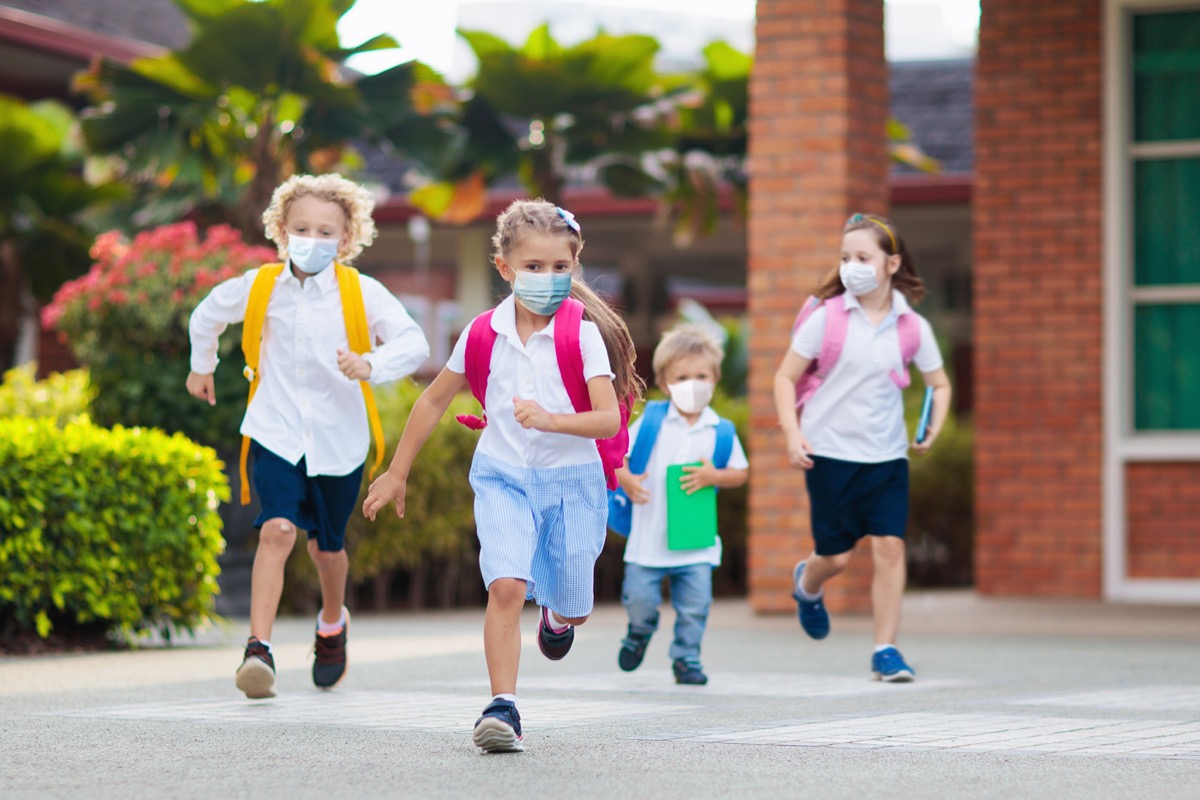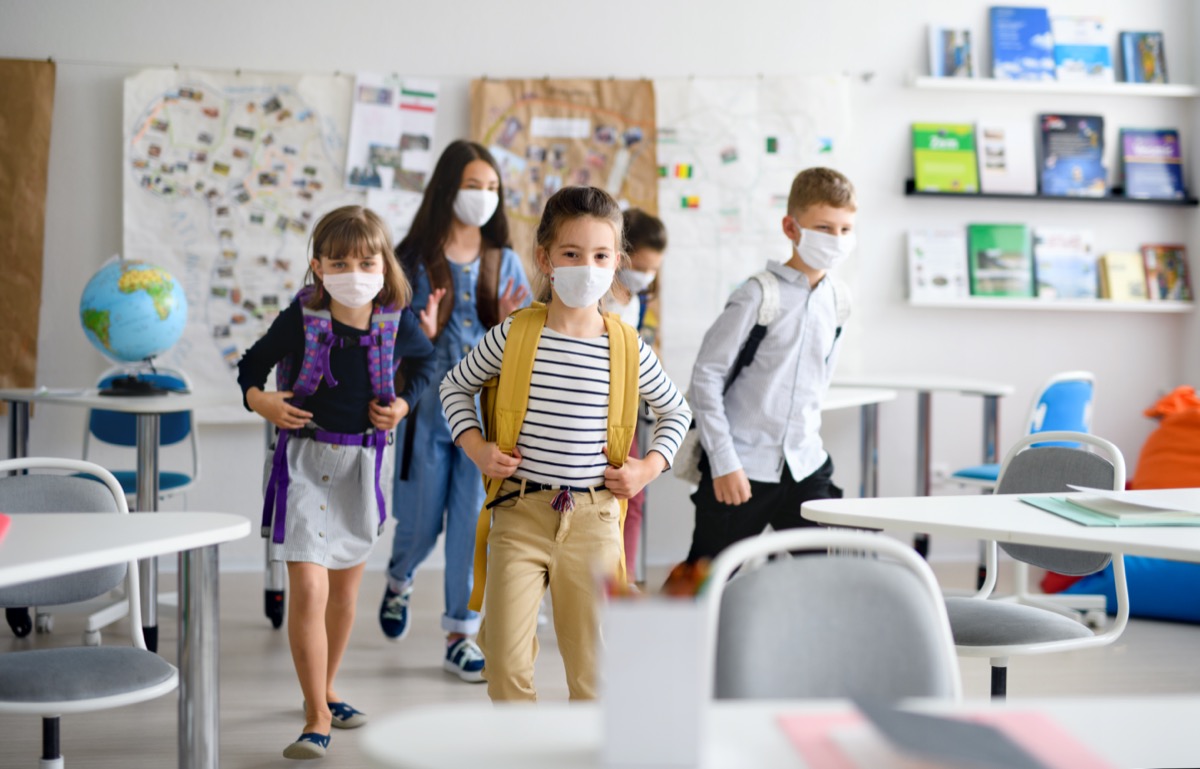The previously posted guidelines, which downplayed the risk of transmission between children compared to adults, was removed from the CDC’s website on Oct. 29 without a public announcement, The Hill reports. “Some of the prior content was outdated and as new scientific information has emerged the site has been updated to reflect current knowledge about COVID-19 and schools,” a CDC spokesperson told the outlet. Read on to find out what this could mean for your kids, and for more on how you can tell you’re sick, check out These 4 Easy-To-Miss Symptoms Could Mean You Have COVID, Experts Say. Read the original article on Best Life. While initial studies found that children were not only at a lower risk of developing severe COVID but also less likely to transmit the disease, more recent research has begun to sway the opinion of public health officials. In fact, a study from the CDC itself released in September found that teens and tweens between the ages of 12 and 17 were twice as likely to become ill with coronavirus as children aged 5 to 11. This, coupled with increased infection rates in the majority of states, led the agency to make the changes. And if you want regular COVID updates, sign up for our daily newsletter. The agency controversially threw its support behind getting kids back to class over the summer, with its very top brass making the case that the virus wasn’t as serious a threat to children as a lack of normalcy was. In a statement on July 23, CDC Director Robert Redfield, MD, said: “It is critically important for our public health to open schools this fall…School closures have disrupted normal ways of life for children and parents, and they have had negative health consequences on our youth.” But in an about-face, the agency replaced its previously enthusiastic endorsement of opening schools with a statement, now saying that “the body of evidence is growing that children of all ages are susceptible to SARS-CoV-2 infection and contrary to early reports might play a role in transmission.” The CDC also now acknowledges that “teachers and students are in close contact for much of the day, and schools can become a place where respiratory diseases like COVID-19 can quickly spread.” And for more on where the pandemic is the worst, check out This Is How Bad the COVID Outbreak Is in Your State. The changes come months after experts in the public health community began petitioning the agency to change its outlook on school openings, which many felt were more the result of political pressure than actual scientific reasoning. “I am pleased that, in response to this request, CDC has now removed two guidance documents unsupported by science and has agreed to update two more that Director Redfield concedes are ‘out of date,’” Rep. James Clyburn, chairman of the House Select Subcommittee on the Coronavirus Crisis, said in a statement. “With infections rising dramatically across the country, it is critical that schools, teachers, and families have accurate, trustworthy public health information on the coronavirus.” And for more on politics and the pandemic, check out This Is Why Dr. Fauci Isn’t on Joe Biden’s COVID Task Force.ae0fcc31ae342fd3a1346ebb1f342fcb While the CDC’s update may have come as a welcome change to many in the scientific community, there are still others who feel differently. For example, guidance posted on the World Health Organization’s (WHO) website, last updated on Sept. 18, reads: “To date, few outbreaks involving children or schools have been reported. However, the small number of outbreaks reported among teaching or associated staff to date suggests that spread of COVID-19 within educational settings may be limited.” And for more news on controlling the pandemic, check out Dr. Fauci Says This Many People Need to Get Vaccinated to Stop COVID.



